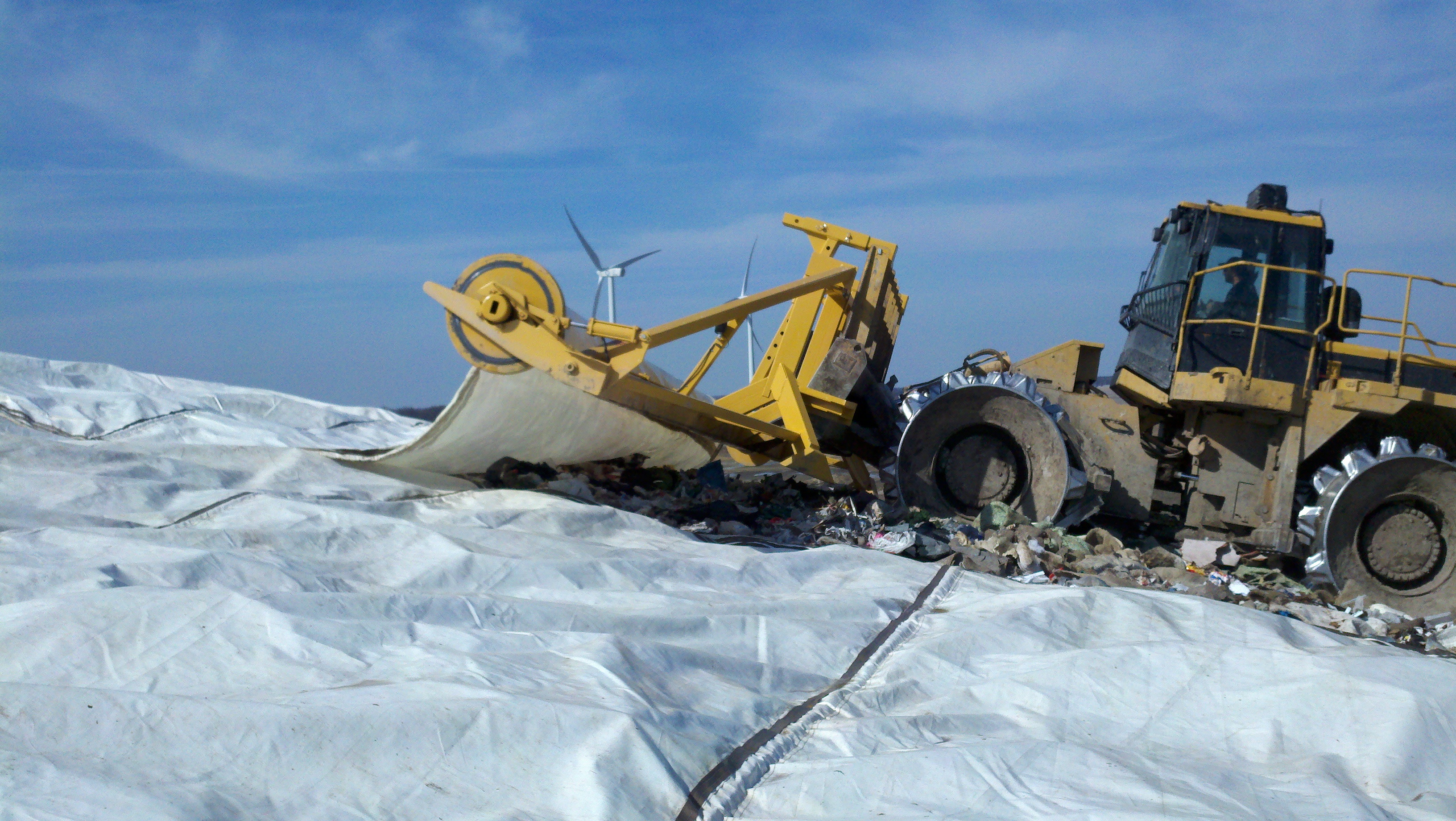
Tarpomatic is one of the most innovative Alternate Daily Cover systems for landfills on the market, supplying multiple cost saving and environmental advantages it is a must for any landfill operation. Deployed in over 600 landfills world wide, Tarpomatic is quickly becoming an industry best practice tool.
What Advantages does Tarpomatic provide you with?
SAVE VALUABLE AIRSPACE
Dramatically extend the life span and profitability of your landfill.
ONGOING CUSTOMER SUPPORT AND TRAINING
We work with you to ensure you get the most benefit out of your equipment.
FAST AND EASY OPERATION
Saves you costly staff hours and ever increasing fuel costs.

CUT CONTAMINATED RUNOFF
Dramatically cut contaminated runoff as the Tarpomatic tarps are not only extremely tough and fire retardent but are also 99.99% water proof.

INTEGRATED ODOUR CONTROL SYSTEM
Tarpomatic’s fully-integrated deodorising system helps to neutralise odours, reducing the impact of your landfill on the surrounding environment.
REMOTE CONTROLLED OPERATION
All functions on Tarpomatic are able to be controlled from the operator cabin using the radio remote supplied.
UNLIMITED COVERAGE WITH ONE MACHINE
Providing landfills with maximum flexibility, each Tarpomatic tarp covers 234 square metres, and each spool holds up to three tarps. Tarp spools can be connected and disconnected quickly and easily, providing the potential for unlimited coverage.

IMPROVED LEACHATE AND GAS MANAGEMENT
Less soil in your landfill means that there is a better bond of waste, helping leachate to percolate through each lift stopping leachate purging and improving gas capture. Tarpomatic heavy duty waterproof tarps also help to improve rainwater run-off

MINIMISE DUST
The Tarpomatic ADC System reduces the need to collect, stockpile, transport, place or spread daily soil cover – reducing costs, improving productivity and, most importantly, minimising the associated dust problem












